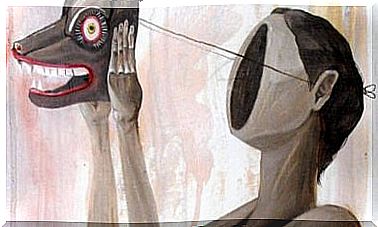Philip Zimbardo: Biography Of The Author Of Lucifer Effect

Philip Zimbardo is a controversial social psychologist and researcher who quickly established himself. His study in Stanford prison was just the germ of his interest in why people behave in completely unexpected ways in certain situations.
What are the reasons that lead a good person to commit an heinous act? How could an intelligent person do a totally absurd and irrational action? These are the questions to which this brilliant psychologist has devoted his entire life. A research that has paid off.
Zimbardo’s contributions to psychology have been extremely significant. The effects that absolute control can have on people’s consciousness or the consequences of worship and groupthink are some of these.
He also devoted himself to the study of shyness, motivation and human perspectives over time. Discover with us the life of one of the most controversial but at the same time prolific psychologists in contemporary psychology.

Academic life
Philip Zimbardo was born in New York on March 23, 1933. We don’t have much information about his childhood, but we do know that he was a brilliant student. In 1954 he obtained a triple specialization in Psychology, Sociology and Anthropology. Just a year later, he earned his PhD in Psychology from Yale University.
After finishing his studies, he briefly served as a teacher at Yale. He later began working as a psychology lecturer at New York University until 1967.
After his time in New York, he taught for a year at Columbia University until, in 1968, he became a member of Stanford University’s Faculty of Psychology. He remained there until 2003 and continued to lecture for a few years.
Philip Zimbardo and Stanford Prison
His experiment in Stanford prison made him famous in 1971. Using the basements of Stanford University, Zimbardo randomly assigned two roles to the students who took part in the experiment. In total, there were 24 male students.
Zimbardo created a mock prison in which some volunteers were prisoners and others assumed the role of guards. The experiment, which was to last two weeks, was stopped and ended after the first six days. The causes of this premature termination were the behavior and extreme reactions of both groups.
Individuals who served as prison guards quickly began to show sadistic and cruel conduct towards prisoners. Likewise, the prisoners triggered unrest, and many of them rapidly developed depressive behaviors and loss of hope.
Despite the criticisms raised against the experiment, certainly not very empathetic, Philip Zimbardo expanded the results obtained by drawing a parallel with the Abu Ghraib prison. With the collected material, he published the book The Lucifer Effect. Do you become bad? .

Inventory of the time perspective
Philip Zimbardo designed a model to evaluate the perspective a person holds on the past, present and future. This test measures five different attitudes related to the passage of time: the negative past, the positive past, the fatalistic present, the hedonistic present and the future.
The idea is that people’s lives are determined from a personal perspective of the passage of time. To this end, he has listed a number of paradoxes that seem to influence our personal and cultural conduct.
Paradoxes, basically, refer to how unaware people are of the powerful effect of the passage of time on emotions and thoughts. Our perspective of time is determined by personal experience, which also constitutes a group and cultural perspective and which ends up shaping a nation.
Philip Zimbardo, after the Stanford experiment
Although known around the world for the Stanford prison experiment, Philip Zimbardo’s achievements have been countless. In 1977, he founded The Shyness Clinic , a center to help people overcome their shyness and get rid of it to feel relaxed in social settings.
His work as a consultant and researcher in this center lasted several decades. Mind control and the behavior of the more educated groups were other areas of study to which he devoted many years of study.
He was named president of the American Psychological Association in 2002. He also founded Heroic Imagination, an organization that studies and encourages heroism in everyday life.
Finally, he was the host of an acclaimed television series called Discovering Psychology , with which he attempted to bring viewers closer to the principles and theories of psychology. Undoubtedly he was a very prolific author who, beyond his famous experiment, explored various fields that allowed him to investigate the human mind more deeply and publish numerous books.
His contributions to psychology are enormous, it is difficult to delimit them and his studies have left us useful data and evidence as a starting point for numerous researches.
Philip Zimbardo is another of our favorite social psychologists. Courageous in his research, he unearthed many amazing facts about the human being that helped us better understand ourselves as individuals and as a society.








